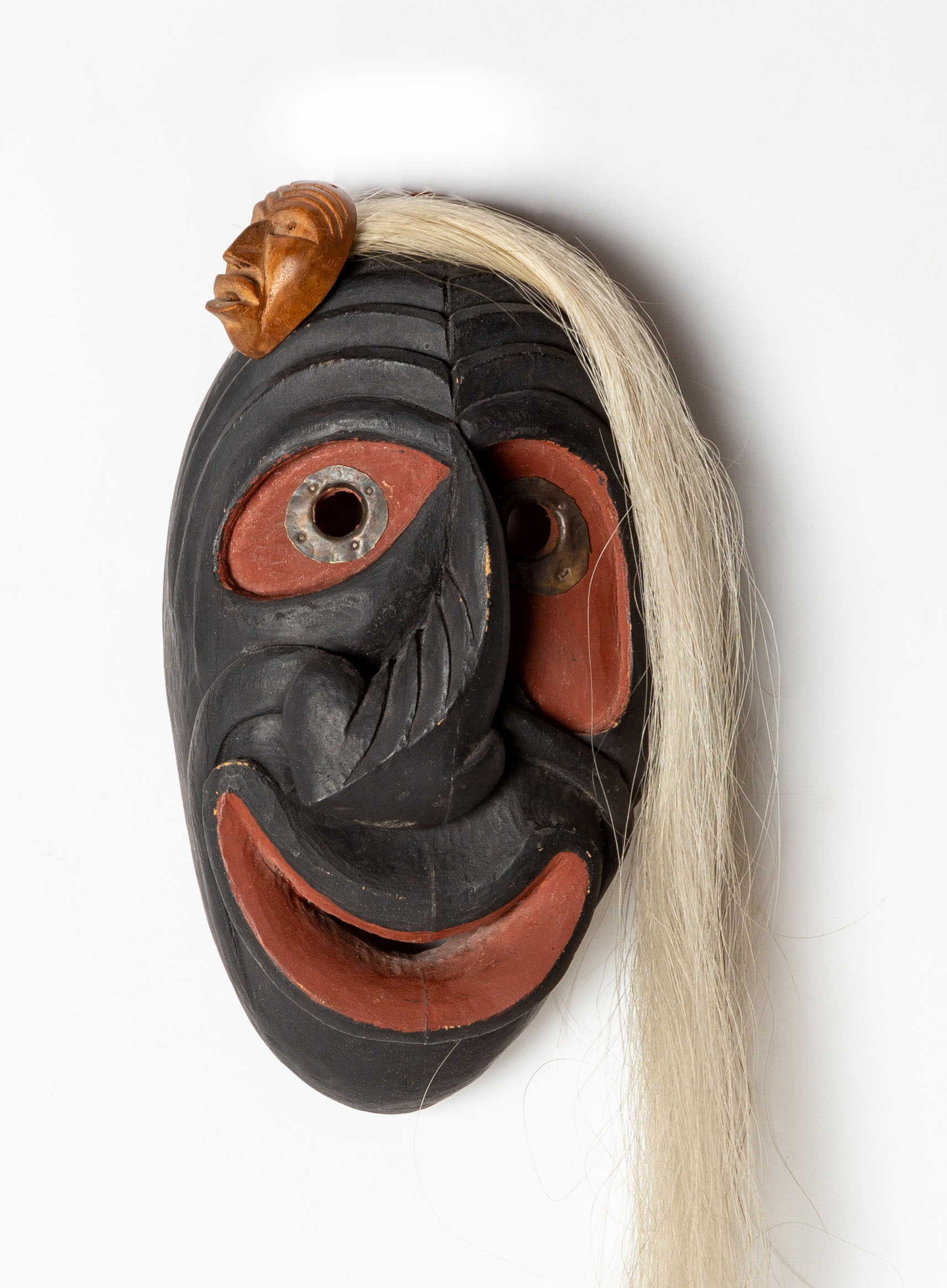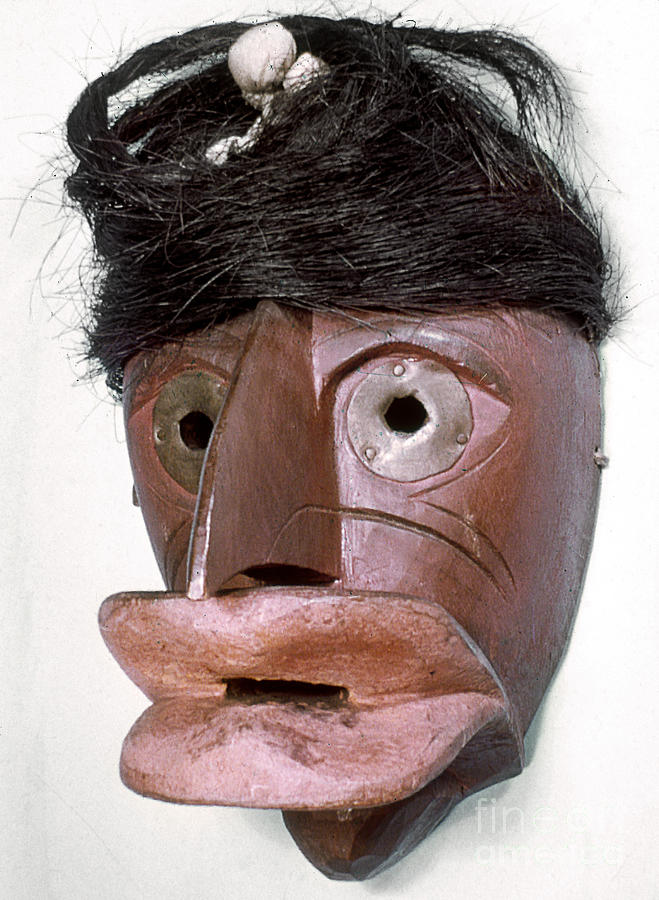
The Enduring Power of the False Face Society: Sacred Healing Masks and Seneca Medicinal Traditions
In the verdant embrace of what is now upstate New York, among the rolling hills and ancient forests, a profound spiritual tradition has persisted for centuries: the Seneca False Face Society. Far from mere artifacts, the masks central to this society are living embodiments of potent forest spirits, wielded in sacred rituals designed to cure illness, restore balance, and maintain harmony within the community. This is not a quaint historical footnote, but a vibrant, deeply revered system of indigenous medicine, where grotesque visages become conduits for profound healing.
The term "False Face" itself, a somewhat misleading English translation, refers to the Ga’goh’sah – the "Faces of the Forest" or "Faces of the Grandfathers" – entities believed to dwell within the natural world. For the Seneca, one of the Six Nations of the Haudenosaunee (Iroquois) Confederacy, these masks are not merely representations but are imbued with the very essence of the spirits they depict. They are integral to a holistic system of medicine that addresses not just physical ailments but also spiritual, emotional, and social imbalances.
Origins and the Spirits of the Forest
The origins of the False Face Society are rooted in ancient Seneca cosmology, often recounted through a foundational myth. One prevalent version speaks of a powerful, unruly spirit who encountered the Creator (or the Great Spirit). In a test of power, the Creator caused a mountain to strike the spirit’s face, leaving him with a twisted mouth and broken nose – features commonly depicted on the masks. Despite his disfigurement, the spirit was granted the power to heal, particularly from illnesses caused by malevolent forces or spiritual disturbances. He was instructed to work through human intermediaries, using tobacco and rituals to alleviate suffering.
Another aspect of their origin involves encounters with various forest spirits – powerful, sometimes mischievous or fearsome beings that roam the wilderness. These spirits, if offended or encountered under certain circumstances, could inflict illness. The masks, then, are a way to appease, embody, or even compel these spirits to assist in healing. The act of carving a mask is itself a sacred endeavor, traditionally performed directly on a living tree – often basswood, but also maple, willow, or pine – whose spirit is consulted and offered tobacco before the carving begins. The tree’s sap, seen as its blood, runs from the cuts, a symbolic act of shared life force. The carver works with the tree’s natural knots and contours, allowing the spirit within to guide the emerging face, ensuring each mask is unique and powerful.

The Masks: Visages of Power and Healing
Each False Face mask is a testament to raw, visceral power. They are characterized by exaggerated features: deeply wrinkled brows, prominent noses (often broken or crooked), wide, twisted mouths, and sometimes bulging eyes. These features are not meant to be beautiful in a conventional sense; rather, they are meant to be powerful, evocative, and sometimes frightening to the spirits of illness. Human or horse hair is often affixed for eyebrows and beards, adding to their lifelike, albeit otherworldly, appearance.
The masks are traditionally painted red or black. Red masks typically represent spirits encountered during the day, associated with the rising sun, warmth, and active life. Black masks often represent spirits encountered at night or during twilight, linked to the earth, mysterious powers, and introspection. Both colors carry deep symbolic weight and contribute to the mask’s specific healing properties. The power of the mask is not inherent in the wood itself, but in the spirit that animates it and the collective belief and ritual that surrounds it. As such, the masks are considered living entities, requiring care, tobacco offerings, and respect.
The False Face Society: Keepers of Tradition
Membership in the False Face Society (or, more accurately, the "Society of Faces") is not sought but rather bestowed. Individuals typically join after experiencing a powerful dream or being healed by the society’s rituals. Dreams are considered sacred messages, often revealing an individual’s spiritual path or calling. If a person dreams of a False Face, it is understood as a summons to join the society and dedicate themselves to healing.
The society itself is structured and functions within the broader Seneca community. Its members are highly respected, serving as spiritual doctors and custodians of the masks and rituals. They are responsible for carrying out the healing ceremonies, ensuring the masks are properly cared for, and passing on the traditions to the next generation. There are often two main types of "faces" within the larger society: the wooden False Faces (the focus here) and the Husk Faces, who wear masks woven from corn husks. The Husk Faces traditionally serve as messengers, agricultural figures, and often lighter, more humorous counterparts to the potent wooden faces, though they also play a role in certain healing and ceremonial contexts.
Healing Rituals: A Holistic Approach
When an individual falls ill, particularly with ailments believed to have a spiritual component – chronic pain, mental distress, or conditions unresponsive to conventional medicine – the False Face Society may be called upon. The healing ritual is a multi-faceted event, deeply rooted in community and spiritual connection.
The ceremony typically begins with an offering of tobacco, a sacred plant for the Haudenosaunee, which serves as a spiritual bridge between the human and spirit worlds. The patient, often surrounded by family and community members, awaits the arrival of the society members. These members enter the longhouse or ceremonial space, often stooped, with their masks covering their faces, their bodies adorned with blankets or traditional clothing. They carry turtle shell rattles, whose rhythmic shaking is believed to summon the healing spirits and drive away malevolent ones.

The healing act itself is potent and intense. The masked figures will often move around the patient, blowing hot ashes from a pipe over them, or rubbing tobacco on the affected area. The mask itself might be gently touched to the patient’s body. Chants and songs fill the air, creating a powerful, immersive atmosphere. The intention is to draw out the illness, to frighten away the spirits causing distress, and to restore the patient’s spiritual and physical balance. Sweating is often induced, a process believed to cleanse and purify the body and spirit.
This is a profoundly holistic approach. It’s not just about addressing physical symptoms but about restoring harmony between the individual, their community, and the spiritual world. The belief in the masks’ power, the communal support, the catharsis of the ritual – all contribute to a profound psychological and spiritual healing that often complements, and sometimes transcends, Western medical interventions. The effectiveness is not merely placebo; it taps into deep cultural understandings of wellness, interconnectedness, and the power of belief.
Cultural Significance and Modern Challenges
The Seneca False Face Society remains a cornerstone of Seneca identity and spiritual life. It represents an unbroken lineage of traditional medicine, a living testament to the resilience and enduring wisdom of indigenous cultures. In a world increasingly dominated by Western scientific paradigms, the society offers a powerful alternative, reminding its members of their unique heritage and their deep connection to the natural and spiritual realms.
However, like many indigenous traditions, the False Face Society faces modern challenges. Misunderstanding and misrepresentation by outsiders have historically been an issue. The sacred nature of the masks has often been disregarded, with masks ending up in museums or private collections, treated as mere ethnographic curiosities rather than living, sacred entities. Repatriation efforts under acts like the Native American Graves Protection and Repatriation Act (NAGPRA) have sought to return these powerful objects to their rightful communities, where they can once again participate in healing rituals.
Moreover, the commercialization and appropriation of False Face imagery are deeply offensive to the Seneca people. Reproductions or imitations of these sacred masks, sold as "art" or souvenirs, disrespect the profound spiritual power they embody and trivialize centuries of tradition. The Seneca maintain that these masks are not for public display or commercial gain; their power is meant for their community, within the sacred context of their ceremonies.
Conclusion: An Enduring Legacy of Healing
The Seneca False Face Society, with its sacred healing masks and ancient medicinal traditions, stands as a powerful symbol of indigenous resilience and spiritual depth. It embodies a holistic understanding of health, where the physical, mental, and spiritual are inextricably linked, and where the forces of the natural world are both respected and enlisted in the pursuit of well-being.
Through their grotesque yet profoundly powerful visages, the False Faces continue to embody the spirits of the forest, bringing comfort, healing, and balance to the Seneca people. They are a vibrant, living tradition, a testament to the enduring power of cultural identity, communal belief, and the timeless wisdom embedded in the land and its spirits. In their continued existence, the False Faces offer not just healing for the individual but a profound message for all: that true wellness often lies beyond the visible, in the sacred connections that bind us to our past, our community, and the mysterious, powerful forces of the world around us.


